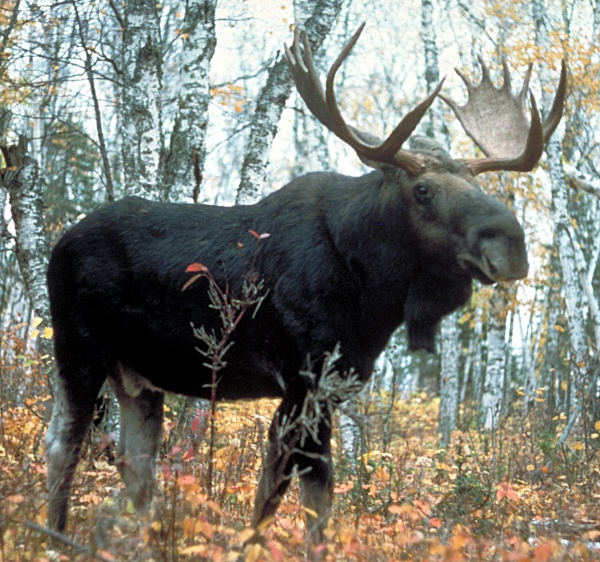Facts About Moose, Elk
The moose, scientifically known as Alces alces and referred to as elk in British English, is the largest member of the deer family. Male moose are easily identifiable by their broad, palmate antlers, distinguishing them from other deer species. These majestic animals typically inhabit the boreal and temperate forests of the Northern Hemisphere. Unfortunately, human activities such as hunting have significantly reduced their natural range. However, conservation efforts aim to reintroduce them to their former habitats. Today, moose populations can be found in regions like Canada, Alaska, New England, Fennoscandia, the Baltic states, and Russia. Their diet comprises both terrestrial and aquatic plants. Natural predators of the moose include gray wolves, bears, and humans.
Unlike other deer species, which often form herds, moose are solitary creatures. Calves remain with their mothers until the females are ready to mate again. Moose can become quite aggressive and move rapidly when feeling threatened. During the autumn mating season, males perform elaborate displays to attract females. Notably, the term "moose" in North America refers to Alces alces, whereas "elk" in British English refers to the same species. However, in North America, "elk" denotes a different species, Cervus canadensis, also known as wapiti.
Since the 1990s, moose populations in temperate North America have been declining due to factors such as deer encroachment and emerging diseases. Nonetheless, their numbers remain stable in arctic and subarctic regions. Moose also thrive in parts of Europe and Asia, with substantial populations in countries including Norway, Sweden, Finland, Russia, and Latvia. Recognizing their ecological significance and value as game animals, moose populations are meticulously managed.
Moose possess distinctive features such as long noses, hooves, thick fur, dewlaps (a flap of skin under the chin), and iconic antlers. They are herbivores with a diverse diet that includes underwater vegetation. Despite their generally docile nature, moose can be dangerous, particularly during mating season or when safeguarding their young. They are also frequently involved in vehicle collisions, prompting the installation of warning signs and other preventive measures in moose-inhabited areas.
Efforts to domesticate moose have seen some success, such as the Kostroma Moose Farm in Russia. The moose lineage has a long history, with ancient ancestors like Libralces gallicus and Cervalces latifrons being significantly larger than modern moose. The contemporary moose emerged in the late Pleistocene epoch, coexisting with species like Cervalces scotti, the American stag-moose.

 Russia
Russia